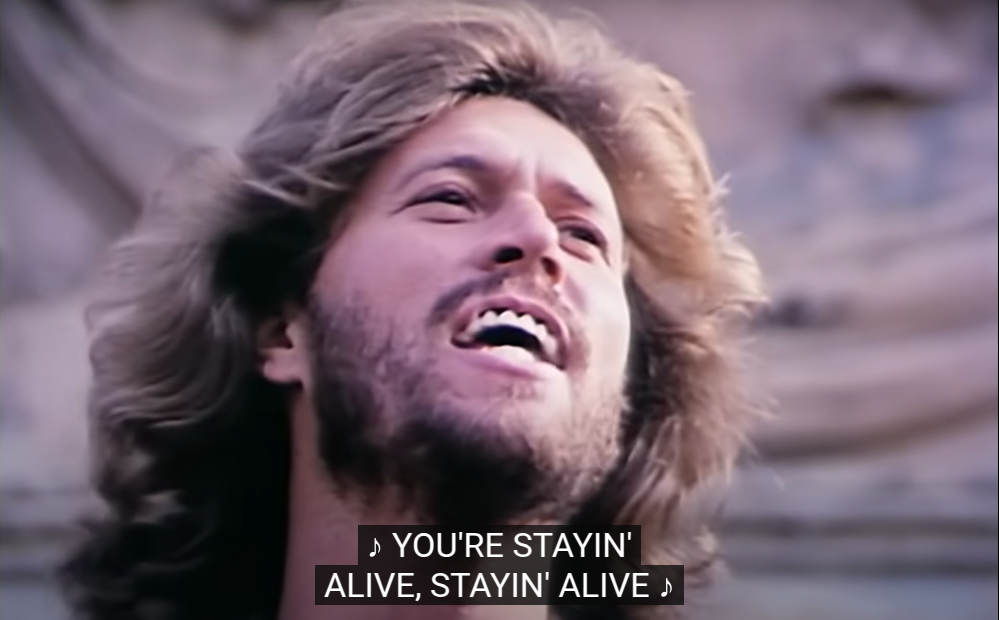emergency response
fun facts
life saving
skills
tips and tricks
AED, AmericanHeartAssociation, beathero, cardiacarrest, CPR, CPRtips, CPRtraining, emergencycare, emergencyresponse, firstaid, handsonlyCPR, healthawareness, heartattack, hearthealth, lifesaving, medicalemergency, publichealth, resuscitation, savealife, StayinAlive, survivalrate
9M2PJU
0 Comments
Performing CPR to the Beat of Stayin’ Alive: A Lifesaving Rhythm
When someone experiences a cardiac arrest, every second counts. Immediate action is vital, as performing cardiopulmonary resuscitation (CPR) can make the difference between life and death while waiting for emergency services to arrive. However, one of the most common challenges for bystanders performing CPR is maintaining the correct chest compression rate. Fortunately, there’s a simple and effective way to help you keep pace: the iconic song Stayin’ Alive by the Bee Gees.
Why Stayin’ Alive?
According to the American Heart Association (AHA), the optimal compression rate for CPR is between 100 and 120 beats per minute. Interestingly, Stayin’ Alive has a tempo of 103 beats per minute, which conveniently falls right within the recommended range. This makes it the perfect rhythm to follow while performing chest compressions during CPR.
The catchy beat of Stayin’ Alive can serve as a natural metronome, helping bystanders maintain a steady and effective compression rate. Studies have shown that CPR performed at the correct rate can significantly increase the chances of survival for someone experiencing cardiac arrest. So, by simply following the beat of this timeless disco anthem, you’ll be performing CPR effectively and confidently.
How to Perform Hands-Only CPR
If you come across someone who has collapsed and is unresponsive, it’s crucial to act fast. Here’s a step-by-step guide to performing hands-only CPR:
- Check for responsiveness
Gently tap the person on the shoulder and shout, “Are you okay?” If there’s no response, it’s time to take action. - Call for help
Immediately dial emergency services (999, 112, or 911 depending on your location). If possible, ask someone nearby to call for help while you begin CPR. - Start chest compressions
Position your hands in the center of the person’s chest, one hand on top of the other.
Press down hard and fast, aiming for a depth of at least 5 cm (2 inches).
Maintain a compression rate of 100–120 per minute.
Follow the rhythm of Stayin’ Alive: The beat of the song will help you stay on track with the correct compression rate. - Continue until help arrives
Keep performing CPR until one of the following occurs:- The person starts breathing normally.
- A trained professional (such as an emergency responder) takes over.
- You are physically unable to continue due to exhaustion.
Rescue Breaths (If Trained)
If you are trained in CPR and feel comfortable giving rescue breaths, here’s how to do it:
- After performing 30 chest compressions, provide 2 rescue breaths.
- Open the person’s airway by tilting their head back slightly.
- Pinch the person’s nose shut and seal your mouth over theirs.
- Blow air into the person’s mouth for about 1 second per breath, watching for their chest to rise.
- Repeat the cycle, continuing the 30:2 compression-to-breath ratio, until help arrives or the person shows signs of life.
The Lifesaving Power of Stayin’ Alive
By using a well-known song, CPR becomes less intimidating and easier to perform. The rhythm of Stayin’ Alive provides a familiar and accessible way for bystanders to maintain the proper compression rate, even in high-stress situations. The American Heart Association (AHA) has endorsed this technique as a powerful memory aid, encouraging more people to take action and offer assistance during a cardiac emergency.
Not only does this method increase the likelihood of performing CPR correctly, but it also boosts confidence in people who might otherwise hesitate. The next time you hear the upbeat rhythm of Stayin’ Alive, remember that it’s more than just a classic disco hit – it could be the key to saving a life.
References
- American Heart Association. (2020). Hands-Only CPR. Retrieved from https://www.heart.org/en/cpr
- American Heart Association. (2015). How to Perform Hands-Only CPR. Retrieved from https://www.heart.org/en/cpr/how-to-perform-hands-only-cpr
- The Bee Gees. (1977). Stayin’ Alive. [Song]. On Saturday Night Fever Soundtrack. RSO.
- Mayo Clinic. (2022). Cardiopulmonary Resuscitation (CPR). Retrieved from https://www.mayoclinic.org/first-aid/first-aid-cpr/faq-20058064
- National Institutes of Health (NIH). (2020). Cardiac Arrest and CPR. Retrieved from https://www.ninds.nih.gov/health-information/disorders/cardiac-arrest







Post Comment